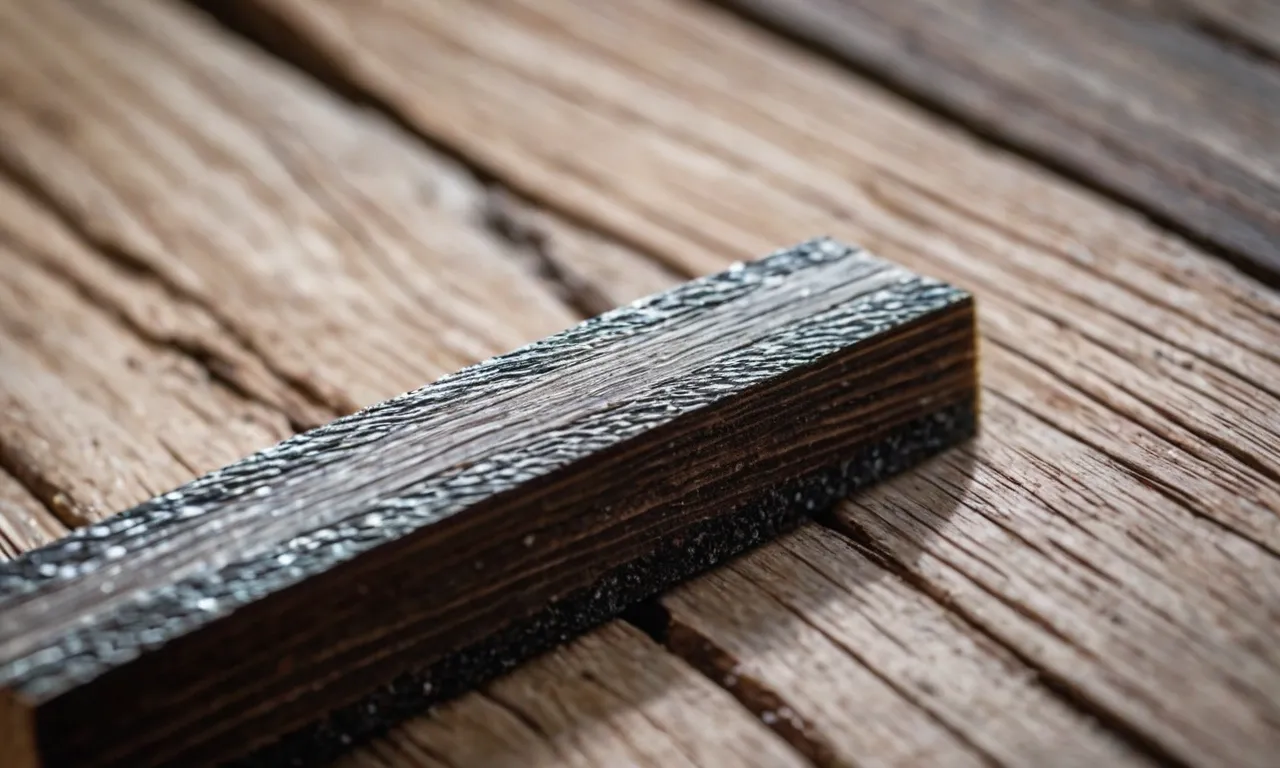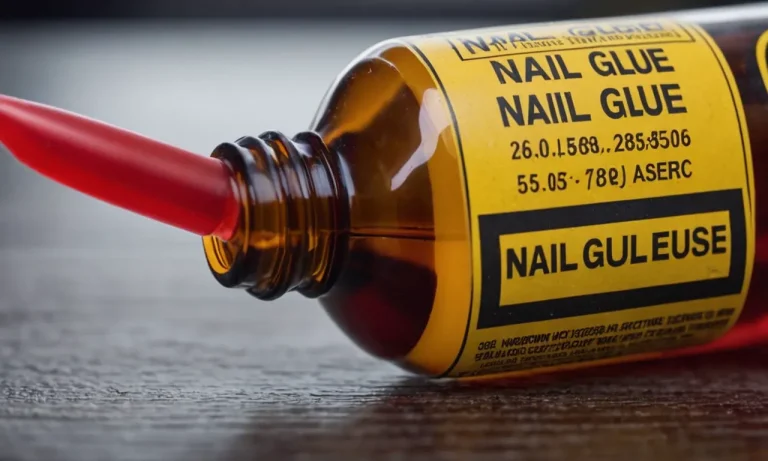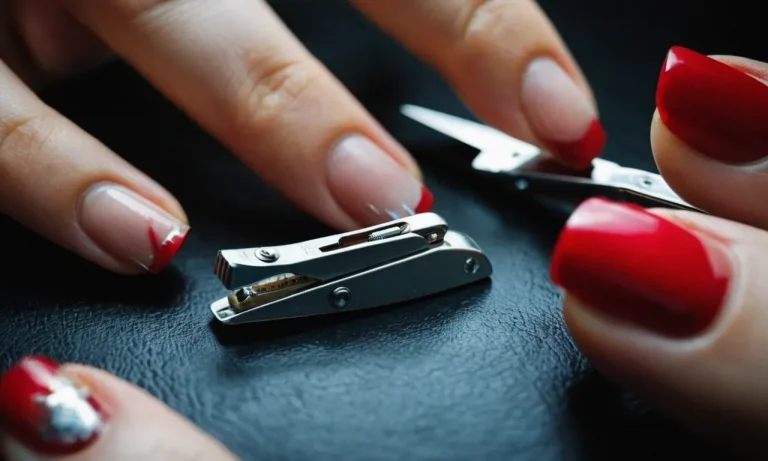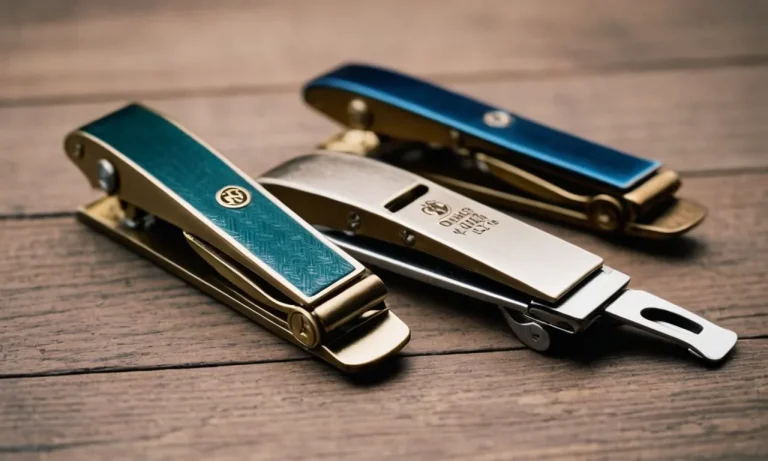Can You Use A Nail File As Sandpaper?
Do you need to sand or smooth a surface, but don’t have any sandpaper on hand? In a pinch, some people wonder whether a nail file or emery board can substitute for sandpaper. While nail files and sandpaper serve similar purposes, there are some key differences between the two that determine their suitability for tasks like sanding wood, metal, or plastic.
If you’re short on time, here’s a quick answer to your question: While a nail file or emery board can work for light sanding jobs in some cases, it generally cannot fully substitute for real sandpaper, especially for heavy-duty sanding tasks.
The Main Differences Between Nail Files and Sandpaper
Abrasiveness
Nail files are generally less abrasive than sandpaper. They are designed to gently shape and smooth nails rather than remove large amounts of material. Nail files often have a grit rating around 180-240, while sandpapers start around 60 grit and go all the way up to 2,000.
Using a nail file as sandpaper would take a very long time for tasks requiring heavy material removal.
Backing Material
The backing material differs between nail files and sandpaper as well. Nail files usually have a cardboard or plastic backing which allows flexibility to conform to the nail shape. Sandpapers have a rigid paper or fabric backing suited for sanding flat surfaces.
The softer backing of a nail file would likely bend or tear if used for heavy-duty sanding jobs.
Shape and Size
Nail files are designed to be small, portable tools that fit conveniently in purses or pockets and work well for fingernails. They are shaped narrow and rectangular, usually 6-8 inches long. Sandpapers come in a wide variety of shapes and sizes, from small sheets to power tool discs, depending on the application.
Large sanding jobs would be difficult or impossible with just a small nail file.
While nail files and sandpaper both have abrasive qualities, they are designed for very different purposes. Nail files gently shape nails, while sandpaper removes greater amounts of material on larger jobs. Shape, size, backing material, and abrasiveness levels set them apart.
In a pinch, a nail file could be used lightly as sandpaper, but for the most efficient sanding, use the proper sandpaper grit and grade.
When a Nail File Might Work Instead of Sandpaper
Light Sanding of Soft Materials
In a pinch, a nail file can be used for light sanding jobs on relatively soft materials like wood or drywall. The abrasive surface of a nail file is similar to fine grit sandpaper, around 150 grit. This means it can smooth and remove small imperfections, but don’t expect to do any heavy material removal or shaping (source).
For example, you could use a nail file to lightly sand a small wooden craft project to smooth out brush strokes or remove pencil marks. Or you might file down a rough patch on drywall before painting. The nail file likely won’t work as well as actual sandpaper, but it can get the job done if you just need to do some quick, light sanding.
In a Pinch for Small Jobs
While nail files aren’t a perfect substitute, they can be handy for minor sanding tasks in a pinch. If you just need to smooth a small imperfection on a finished wood or metal surface, a nail file may do the trick (source).
For example, if you notice a slight splinter on a chair leg or a small scratch on a metal cabinet handle, grabbing a nail file can help smooth things out. The abrasive surface will gently wear down the roughness. Just don’t expect miracles—a nail file won’t repair severe damage.
You can also use the finer grit side of a two-sided nail file for polishing metal jewelry or eyeglass frames. While it won’t shine as well as metal polish or buffing tools, it can freshen up delicate items when needed.
The bottom line is that while a nail file shouldn’t replace proper sandpaper or files, its fine abrasive surface can be handy for minor quick-fix sanding jobs. So next time you need to smooth a small imperfection on a finished surface, save a trip to the hardware store and try a nail file first!
Disadvantages of Using a Nail File as Sandpaper
Not Abrasive Enough for Many Materials
Nail files are designed to gently shape and smooth relatively soft nail material. Their abrasive surface simply isn’t rough enough to effectively sand down harder materials like wood, metal, or plastic.
If you try using a nail file to sand these harder surfaces, you’ll end up with very slow and minimal material removal. It would likely take hours of filing to achieve what a proper piece of sandpaper could do in minutes.
Proper sandpaper has a much more abrasive grit surface that can quickly grind down hard materials.
Wrong Shape for Large Surfaces
The small, rectangular shape of a nail file is only ideal for working on tiny surfaces, like fingernails. Using a nail file on larger surfaces would be extremely tedious and inefficient. Let’s say you wanted to sand down a wooden chair leg or table surface – running a tiny nail file back and forth across that entire area would take forever!
Proper sheets of sandpaper are available in a wide variety of sizes and can be wrapped around sanding blocks to tackle large surface areas with ease.
Can’t Achieve a Consistent Finish
When sanding a surface, it’s usually important to achieve a consistent, even finish. The grit of nail file abrasives can vary across the surface, with some spots being more coarse and others more fine. This makes it difficult to produce an evenly sanded surface.
Sandpaper is manufactured to exacting standards, with consistent grit across the entire sheet. This uniform abrasion allows for beautifully smooth, consistent sanding results. Nail files are also prone to clogging as debris builds up in the abrasive surface – this can further contribute to an uneven sanding finish.
With proper sandpaper, the sanding surface stays clear and consistent.
While it may seem tempting to use a nail file in a pinch, the reality is that you’ll end up with poor, inconsistent results. Proper sandpaper is relatively inexpensive and will save you time and frustration in the long run.
Unless you’re just lightly smoothing a tiny area, don’t try to substitute a nail file when sanding. Grab some real sandpaper and enjoy the ease and quality results!
Tips for Getting the Most Use from a Nail File
Focus on Filing Edges
When using a nail file to shape or smooth your nails, it’s important to focus your filing efforts on the edges and corners rather than filing the entire nail surface. This prevents thinning out the nail plate too much, which can lead to peeling and breakage (source).
Use short, gentle strokes concentrated on problem areas like snags and cracks around the edges of the nail.
Use Short, Light Strokes
Filing requires using a delicate touch for the best outcomes. Using too much pressure or aggressively sawing back and forth can lead to uneven shaping, damage to the nail surface, or over-thinning. Instead, use short, light filing strokes in one direction at a time to gently refine the nail edges (source).
Think of nail filing as gently sanding wood—you don’t press too hard or rub chaotically. The goal is to shape and smooth with control.
Clean Frequently to Avoid Clogging
As you use an emery board or nail file, bits of keratin from the nails build up in the abrasive surface. If too much residue accumulates, it prevents the file from retaining its rough texture needed to smooth nails.
According to nail care experts (source), gently wash nail files every 5 to 10 uses to keep the surface unclogged and working efficiently. Some ways to clean nail files include:
- Use an old toothbrush and soap and water
- Run the file under warm water
- Use a small brush and nail polish remover
Proper cleaning extends the useful life of nail files and buffers so you can enjoy beautiful, smooth nail edges for months before needing a replacement!
When to Use Real Sandpaper Instead
Sanding Wood
When working with wood projects, using a nail file instead of real sandpaper is not recommended for serious sanding needs. Sandpaper comes in varying grits, allowing you to start with a coarse sandpaper to remove material and smoothen, then progressively use finer grits to achieve a smooth finish.
Sanding wood requires sandpaper grits from 60 to 220 typically. Trying to sand and refinish wood with just a nail file would be extremely laborious and produce unsatisfying results.
For example, if you were refinishing a wood table, you would start by removing the old finish with a chemical stripper or coarse 80 grit sandpaper. Then you would progress through finer grits like 120, 150, and 220 to smooth and prepare the surface for staining and sealing.
Using a nail file for all this heavy sanding would take forever and not allow you to get into the nooks, crannies, and edges like real sandpaper does.
Metal Polishing
When working with metal, such as polishing jewelry or smoothing rough edges, a nail file can work in a pinch but does not replace proper metal sanding and polishing tools. Sandpaper designed for metal comes in fine grits of 400 and higher, while metal polishing compounds go up to 2000+ grit for a mirror finish.
While a nail file or emery board may take the edge off sharp metal pieces, it cannot match the smooth polished finish achieved with dedicated abrasives. Rotary tools and buffing wheels are also used for metal polishing, allowing jewelers and metal workers to polish surfaces much faster and smoother than sanding by hand.
Smoothing Drywall Joints
For sanding drywall seams and mud joints, a nail file is not an ideal tool. Drywall sanding requires wider sanding blocks and sheets that can cover large surface areas efficiently. It also requires stiffer sandpaper grits like 80 to 120 to aggressively smooth and feather out mud and joints.
The small surface area of a nail file would make sanding seams or patching extremely tedious. Using coarse sandpaper grits like 36 to 80 allow skimming coats of drywall mud to be smoothed effectively. A flexible nail file does not have the stiffness or grit needed to sand down and level joint compound.
Auto Body Work
In auto body work, real sandpaper will be required when prepping surfaces for painting. To remove paint or rust, coarse grit sandpaper like 80 is used aggressively with sanders and grinding tools. Finer paper is then used to smooth and prep the surface.
The nail file does not have the ability to remove paint or rust at the level needed for auto body work. Choosing the proper grit sandpaper allows auto technicians to efficiently remove material and profile the surface for painting adhesion.
Sanding an entire car by hand with a nail file would be impractical if not impossible.
Conclusion
While a nail file or emery board can work in a pinch for light sanding jobs, real sandpaper is specially engineered for the demands of heavy-duty sanding tasks. Sandpaper comes in a wide range of grits and backings tailored to specific materials and applications.
So when you need a professional-grade sanding result, don’t substitute – use real sandpaper. But a nail file can serve you well for quick, light sanding fixes in your day-to-day life.







